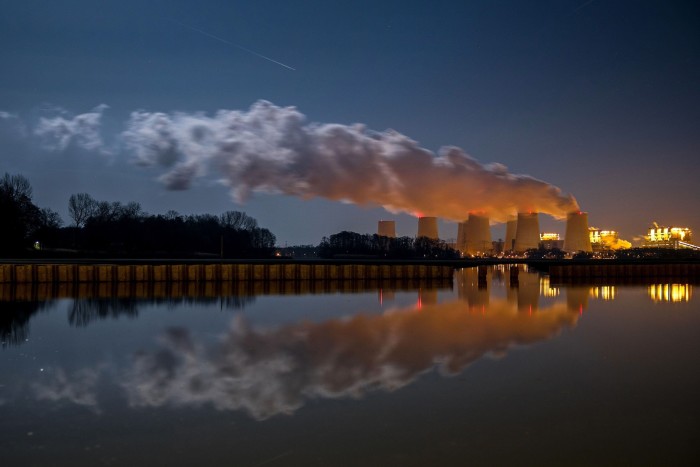Climate graphic of the week: Storms intensify in the Atlantic

Simply sign up to the Climate change myFT Digest -- delivered directly to your inbox.
Scientists believe the rising frequency of the most severe hurricanes is being driven by warming sea and air, with 2020 the most active north Atlantic storm season on record.
A record 30 storms ravaged the region, with 13 hurricanes bringing winds of 74mph or greater and six hurricanes with winds of 111mph or greater.
That surpassed the previous record of 28 storms, set in 2005, according to data from the US National Oceanic and Atmospheric Administration’s National Hurricane Center.
As climate change accelerates, extreme weather events, from hurricanes to floods and wildfires, are likely to become more common, experts warn.
“We know that climate change is making intense storms more frequent,” said Philip Duffy, head of the Woodwell Climate Research Center in Massachusetts. “That’s significant: if you look at where the damage comes from, it’s from the higher intensity storms.”
Dr Alex Baker, a research scientist at Reading University's National Centre for Atmospheric Science, said there was “an emerging consensus” that climate change was making hurricanes “more intense,” but added that it was unclear whether the total number of storms, from the weakest to the strongest, was increasing.
In the US, 12 storms made landfall in 2020, five of which hit the state of Louisiana — a record high for a single state in a season. The most storms recorded in a single month were the 10 that occurred in September.
The National Hurricane Center said the “extremely active” season was “well above normal activity [levels]”.
Storms draw their energy from the ocean’s surface water, and a warmer atmosphere is able to hold more moisture, meaning a storm can release more rain.
“Hurricanes are heat engines that take the heat energy from the oceans and convert it to kinetic energy in the form of wind,” Dr Jeff Masters, a meteorologist who writes for Yale Climate Connections, told reporters last year. “Global warming is adding more heat to the ocean, so the maximum intensity that a hurricane can achieve is increasing,”

Last year tied with 2016 as the warmest year on record globally, and was the hottest 12 months for Europe. It was also a La Niña year, a weather pattern that can contribute to Atlantic hurricane activity.
As well as fuelling an increase in the number of big storms, the changing climate appears to be making so-called “rapid intensification events”, when storms get stronger very quickly, more common. That makes forecasting more difficult, which could leave communities underprepared for a disaster.
A study of 24-hour cyclone wind-speed changes in 1982-2009, published in the journal Nature in 2019, found a “detectable increase of Atlantic intensification rates”.
Climate Capital

Where climate change meets business, markets and politics. Explore the FT’s coverage here
Dr Baker said Atlantic storms also appeared to be travelling further north than they had done historically. “The projections are that that will continue,” he said.
According to the Canadian Hurricane Centre, “the average number of hurricanes that have entered Canadian territory has been increasing” in recent years.
A hurricane with winds of 111mph or greater “would have to be moving rapidly towards Atlantic Canada, with warmer-than-usual coastal waters and the right atmospheric conditions to be present for the storm to keep its strength,” it added.
Even if warming was kept to 1.5C above pre-industrial levels, the goal of the international Paris agreement, extreme weather will continue, said Mr Duffy.
“On the timescale of human lives, no, it doesn't get better, it gets worse,” he said. “It will get better on the timescale of 500 years. That's a consequence of the long lifetime of [carbon dioxide] in the atmosphere.”
Comments